University of Copenhagen Zoological Museum
The Copenhagen Zoological Museum (Danish: Zoologisk Museum) is a part of the Natural History Museum of Denmark, which is affiliated with the University of Copenhagen.
Zoologisk museum | |
 | |
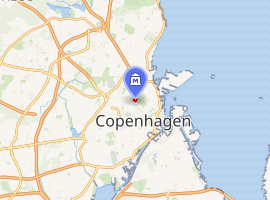
| |
| Established | 1862 |
|---|---|
| Location | Universitetsparken 15, 2100 Copenhagen, Denmark |
| Type | Natural history museum |
| Director | Peter C. Kjærgaard |
| Website | http://zoologi.snm.ku.dk |
History
The Zoological Museum It is among the world's oldest natural history museums, as its collection was started by Ole Worm more than 350 years ago, although it was officially founded in 1862.[1][2]
Collections
The zoological collections contain some 10 million specimens representing an estimated 10 % of described multicellular animal species. The history of the collections reach back in time more than 200 years. Apart from rich collections of Danish animals, the museum has strong representation of:
- The North Atlantic and Arctic (especially Greenland)
- The former Danish colonies in the West Indies
- East Africa (especially the Eastern Arc mountains)
- South American insects (especially butterflies)
- Philippines, Bismarck and Solomon Islands
- Deep Sea faunas
- Whale skeletons
- Material from several expeditions; Ingolf 1892, Galathea 2 (1950-52), Atlantide (1932), P.W. Lund (Lagoa Santa 1832-44)
Exhibitions
The permanent exhibition 'From pole to pole' show animals from around the world in big displays. There is also a Charles Darwin exhibition (with the largest collection of Darwin specimens, mainly barnacles, outside the Natural History Museum, London) and a full collection of animals in the Danish territory, including Greenland. The museum has many important remains of recently extinct birds in storage, including the eyes and internal organs of the last two great auks, several specimens of the pied raven, and one of only two known complete skulls of the dodos that were taken to Europe in the 17th century. Other notable examples include the only known specimen of the spider Pardosa danica, some of the first discovered remains of the saola, and fossils of ancient animals like the transitional Ichthyostega and a Diplodocus nicknamed "Misty".[1]
Gallery
- Rain forest with orangutan
 Antarctic display with penguins
Antarctic display with penguins One of two taxidermied great auks at the museum
One of two taxidermied great auks at the museum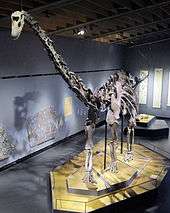 "Misty", a Diplodocus dinosaur
"Misty", a Diplodocus dinosaur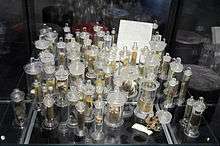 Barnacles from Charles Darwin's collection, gifted to scientists at the university in 1854
Barnacles from Charles Darwin's collection, gifted to scientists at the university in 1854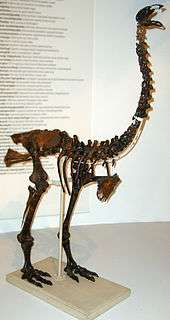 Skeleton of an eastern moa, a species that was hunted to extinction shortly after the first humans arrived in New Zealand
Skeleton of an eastern moa, a species that was hunted to extinction shortly after the first humans arrived in New Zealand Great grey owl, showing its body-size compared to its plumage
Great grey owl, showing its body-size compared to its plumage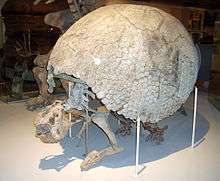 Glyptodon (shown) and saber-toothed cats are among the important prehistoric specimens collected by Peter Wilhelm Lund
Glyptodon (shown) and saber-toothed cats are among the important prehistoric specimens collected by Peter Wilhelm Lund
References
- "På besøg på Zoologisk museum". zooniverse.dk. Retrieved 13 July 2018.
- "Zoologisk Museums historie". Copenhagen Zoological Museum. Retrieved 13 July 2018.
External links
| Wikimedia Commons has media related to Zoological Museum (Copenhagen). |
- "Natural History Museum of Denmark". University of Copenhagen. Retrieved 2014-08-30.
- Torben Wolff. "The history of the Zoological Museum, University of Copenhagen". University of Copenhagen. Retrieved 2014-08-30.
- "Series of pictures from the museum" (in Danish). Retrieved 2014-08-30.